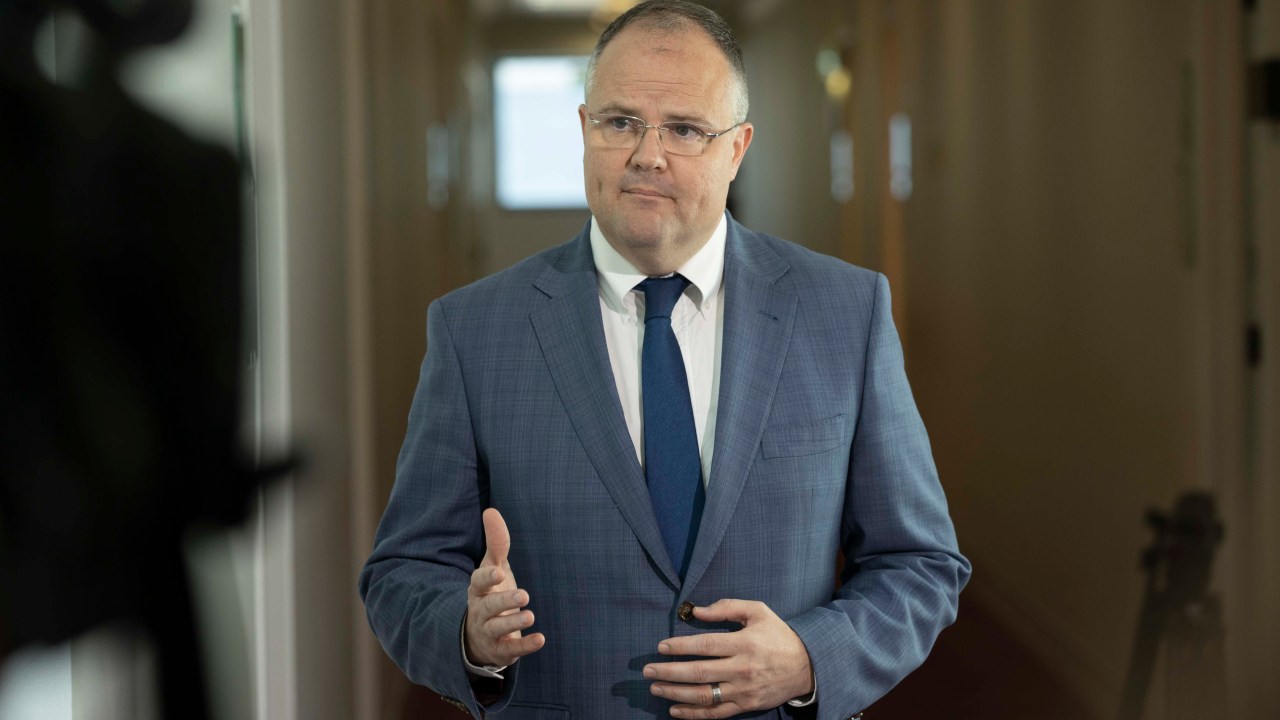Shadow energy minister Ted O’Brien has requested the CSIRO re-run its costs modelling for nuclear power after a scathing report forecasted large-scale nuclear reactors would cost at least $8.6 billion each and take about 15 years to build.
Centre for Independent Studies Energy Program Director Aidan Morrison says the CSIRO must make the GenCost report “more transparent”.
There are concerns that nuclear energy is unfeasible due to high costs, per reports from CSIRO.
“There’s still a long way that could be gone on the CSIRO GenCost report to make it more transparent,” Mr Morrison told Sky News host Chris Kenny.
“At the moment it seems like they only show us about $1 billion worth of peaker plants that’s in their currently constructed model.
“We know we’re going to need a lot lot more than that to firm up all the renewable power.”
The organisation’s GenCost 2023-24 report, which caught nuclear-sceptic’s sights upon its release last Wednesday, found a nuclear plant would produce energy twice as expensive as renewables, take upwards of 20 years to build and at a cost of at least $8.6 billion.
The findings flew in the face of the Coalition’s nuclear approach to net zero, with the alliance yet to reveal many of the key details of its energy policy.
To contend the organisation’s forecast, Mr O’Brien held a meeting with CSIRO chief executive Doug Hilton on Monday night.
He released a statement following the meeting with a request the organisation re-run its modelling on the basis of how technologies such as nuclear energy “are actually utilised across the world and how they would be deployed and operated in Australia”.
Mr O’Brien has taken aim at the CSIRO’s cost modelling for nuclear energy in Australia. Picture: NCA NewsWire / Gary Ramage
Loading embed…
“I’ve requested that CSIRO run the numbers for zero-emissions nuclear energy as an ‘always on’ 24/7 baseload power source and as a multi-generational national asset that will guarantee Australia’s energy security,” the shadow energy minister said.
“This means running the numbers assuming a 92.7 per cent capacity factor in line with the average performance of the US nuclear power fleet rather than a low of 53 per cent and recognising that nuclear power plants built today have a ‘design life’ of 60 years and an expected life of 80 years, not 30 years as assumed in GenCost.
“While these changes won’t show numbers reflecting Coalition policy, it will at least move their estimates closer to how zero-emissions nuclear energy operates around the world.
“When modelers take a deeper look at zero-emissions nuclear energy, they realise it delivers cheaper electricity than suspected, including CSIRO which has already lowered its estimated cost of nuclear substantially despite still making unrealistic assumptions.”
Mr O’Brien said the CSIRO should base its nuclear energy forecast on an “always on” 24/7 baseload power source. Picture: Lukas Barth/Getty Images
The CSIRO’s damning forecast of nuclear power costs caught the attention of renewables-focused Labor MPs that argued the report should put the Coalition’s energy approach to rest.
Treasurer Jim Chalmers slammed Opposition Leader Peter Dutton’s staunch pro-nuclear position that is at the centre of the party’s net zero strategy.
“Well I think the CSIRO has completely torpedoed this uncosted nuclear fantasy of Peter Dutton’s,” Mr Chalmers said, adding the lack of detail and scathing revelations in last week’s report should kill the Coalition’s nuclear approach.
“Nuclear costs more and it takes longer and Peter Dutton won’t tell us where the reactors are going to go – which suburbs, which regions, which towns, which cities are going to house Peter Dutton’s reactors.
“The madness of this, I think, is laid bare in the CSIRO report. For Australia, we have immense opportunity in the renewable sector as the world transitions to net zero and one of the key motivations of the budget was to ensure that Australia grabs the vast industrial and economic opportunities presented by the global net zero transformation.”
Mr Chalmers hit out at the Coalition’s nuclear policy after the CSIRO released its scathing smackdown of the controversial energy source in its GenCost 2023-24 report. Picture: Tracey Nearmy/Getty Images
At his budget reply address to the National Press Club on Wednesday, shadow treasurer Angus Taylor said he did not agree with all the forecasts in the GenCost report.
Mr Taylor argued there would be considerable cost savings by building nuclear power plants on the sites of old coal-fired power stations and using the existing infrastructure to distribute the power.
“There’s all sorts of assumptions that go into numbers,” he said of the CSIRO report.
“One of them is how much transmission you avoid by building a generator on or near an existing site – and that’s a really important consideration in the economics of all this.
“The second one is the utilisation of the generator. Many people like to make assumptions that you build a baseline generator, but not use it as baseline. That doesn’t make a lot of sense.”
Labor’s energy plan is to “wrap this country in transmission lines,” according to Shadow Treasurer Angus Taylor.
“Those of us who live in regional Australia understand the impact of that,” Mr Taylor said.
Mr Taylor delivered his post-budget reply address at the National Press Club of Australia on Wednesday, where he expanded on the Coalition’s plan to address the cost of living.
Alongside the scathing forecast on nuclear energy, the GenCost report found that while inflationary pressures have eased, the impact has not been seen across renewable energy technologies.
Onshore wind costs were up eight per cent while gas turbine costs increased 14 per cent.
The report based its nuclear cost projections on a continuous build program of nuclear power plants in South Korea.
SkyNews.com.au has contacted CSIRO for comment.

